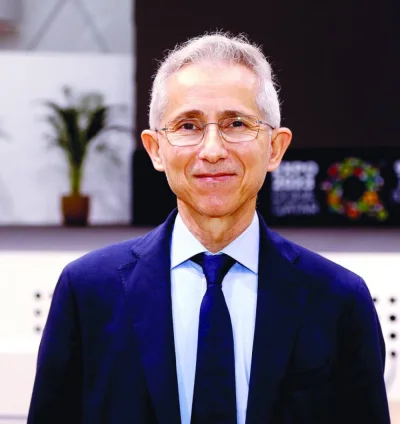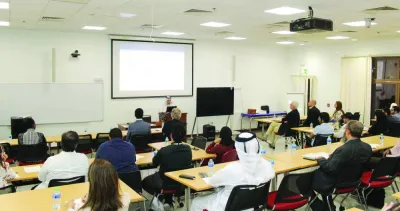By Santhosh V Perumal/Business Reporter
|
|
The Islamic assets in Qatar’s commercial banking industry rose 23% year-on-year in 2012, outgrowing the Gulf banking industry’s growth of 14%, according to Ernst and Young (E&Y).
“Qatar was the fastest growing market where Islamic banking assets are expected to have grown by more than 23% during 2012,” E&Y said in a latest report.
Islamic banking assets with commercial banks in the Gulf region grew only 14% year-on-year to $445bn in 2012, but the growth was considerably lower than the five-year average of 19%, it said, adding those in the conventional banking grew only 8.1%, indicating the relative resilience and potential of the industry.
However, the global consultant said the outlook for the GCC banking industry is “relatively positive” in 2013.
“We expect a relatively positive outlook for the Islamic banking industry in the GCC. Quality of growth remains under pressure and we expect more Islamic banks initiating an honest introspection of their operating model, especially with regards to the weak data management infrastructure,” according to Ashar Nazim, Partner, Global Islamic Banking Center, E&Y.
The inability of most Islamic banks to generate accurate data and on time remains a “serious concern” for the management, the board as well as the regulators, he said, adding where such information is available, the analysis remains very rudimentary and has not really translated to a true competitive advantage.
In comparison to their conventional banking peers, Islamic banks remain technologically “disadvantaged” as software systems are primarily designed for financial institutions based on conventional banking frameworks, E&Y said.
While the industry regulators are looking to tackle this issue, it “remains a concern” for the industry leading to “significantly higher operational and commercial risk”, it said.
In Oman, for example, the Islamic banking regulatory framework has recently been introduced, requiring the Islamic banking institutions to ensure that all core banking systems are certified as Shariah compliant.
Global Islamic banking assets with commercial banks are now at $1.55trn at end of 2012 and projected to exceed $2trn by 2015.
Qatar Q4 trade surplus surges 12% to QR97bn
Qatar’s trade surplus surged 12% year-on-year (y-o-y) to QR96.69bn in the fourth quarter (Q4) of 2012 with exports growing faster than imports.
However, trade surplus shrank 2.5% in Q4 compared to the previous quarter of 2012 with declining exports in upstream petroleum products, even as many of the downstream products witnessed double-digit growth in exports.
Japan, South Korea and India continued to be the largest markets in 2012 with the two together accounting for 60% of Qatar’s exports, Qatar Statistics Authority data revealed.
On a quarter-to-quarter (q-q) review, exports to Japan, India and Singapore strengthened while those to South Korea, China and other countries weakened.
Total exports (valued free on board) surged 10% y-o-y to QR120.44bn; while imports (valued on cost, insurance and freight) grew only 4% to QR23.75bn. Total exports fell less than 2% but imports rose by more than 2% quarter-to-quarter.
Exports grew more than 10% y-o-y to QR119.29bn but re-exports shrank 8% to QR1.15bn. On a quarter-to-quarter basis, exports had fallen 2% but re-exports soared 17%.
Qatar’s exports to Japan amounted to QR36.27bn (accounting for 30% of the total exports); followed by South Korea QR21.54bn (18%), India QR14.11bn (12%), Singapore and China QR6.20bn and QR5.54bn (5% each) and other countries QR36.78bn (30%).
On a q-q basis, exports to Japan grew 14%, India (10%) and Singapore (20%); while those to South Korea fell 10%, China (26%) and other countries (11%).
Commodity-wise, Qatar’s liquefied natural gas (LNG) exports were valued at QR43.25bn in Q4 (constituting 36% of the export basket); followed by crude oil QR22.74bn (19%), condensates QR18.93bn (16%), propane QR5.83bn (5%), naphtha QR4.44bn (4%), butane QR3.65bn (3%), LDPE (low-density polyethylene) and HDPE (high-density polyethylene) QR2.75bn and QR2.63bn (2% each) and other commodities QR16.22bn (13%).
On a q-q basis, LNG exports fell 8% and crude oil by 2%; while condensates exports rose 5%, propane (23%), butane (26%), LDPE (21%) and HDPE (7%). Naphtha exports were rather flat.
Qatar’s imports from the US amounted to QR2.81bn (12% of the total); followed by China QR2.36bn (10%), Japan QR2.15bn (9%), the UAE QR1.86bn (8%), Germany QR1.79bn (7%) and other countries QR12.78bn (54%).
On a q-q comparison, imports from the US rose 11%, Japan (26%), the UAE (3%) and Germany (15%); while that from China was flat.
The most important commodities imported during Q4 2012 included passenger motor vehicles with the value of QR2.66bn; other parts of airplanes or helicopters (QR1.2bn); other aluminium oxide (QR0.5bn); pebbles, gravel, broken or crushed stone (QR0.4bn); iron ores and concentrates and tubes, pipes and hollow cast iron (QR0.36bn each) and telephone sets and mobiles (QR0.35bn).
Imports of other commodities were QR17.98bn.



